2015.12.17 12:05
post your favorite Aldo Rossi here
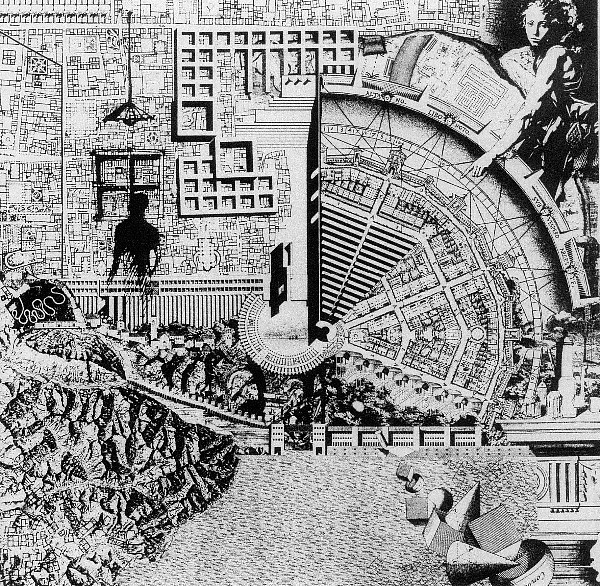
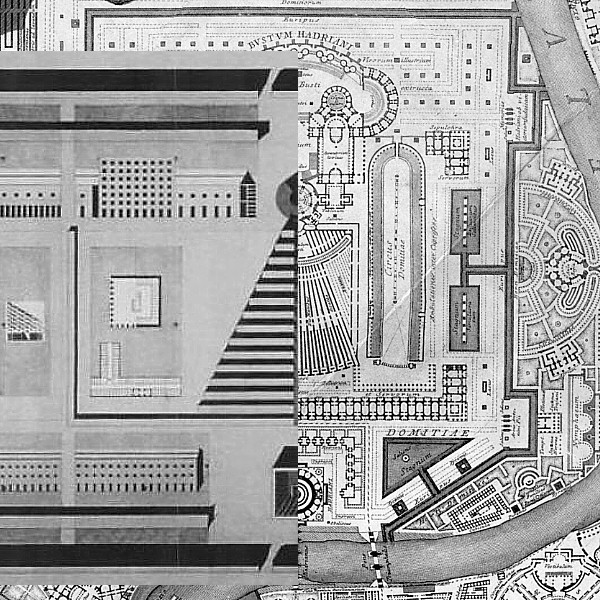
| |
2015.12.18 16:48
30th St. Station District Plan Proposes Mixed-Use Neighborhood Above Rail Yards
Looks like this masterplan hasn't advanced much beyond the masterplan(s) I 3d cad consulted on +/- 30 years ago.
2015.12.18 17:05
9 December
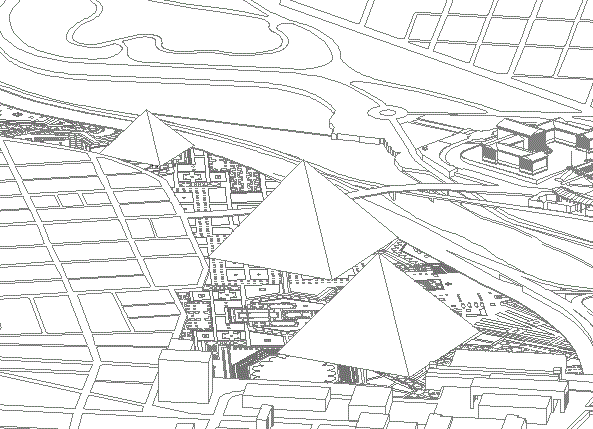
2015.12.18 17:12
18 December
2013.12.18 18:38
Is it true someone out there is currently working on Delirious Cyberspace: A Retroactive Manifesto for the Internet? I can see it all now.
2015
Anything to offset the overwhelming mediocrity.
2015.12.18 19:08
18 December
2015.09.30 10:25
The Icon is that kind of sign that is most like its object--"a sign which stands for its object because as a thing perceived it excites an idea naturally allied to the idea that object would excite." Most icons are indeed likenesses. ... An Index, by contrast, holds no resemblance to its object, it simply points to it: "An index stands for its object by virtue of a real connection with it, or because it forces the mind to attend to that object."
--Vidler/Pierce
The object of the Petersen Automotive Museum "ribbons" is to "evoke a sense of speed and movement." Ribbons do not move on their own, yet they are perfect indices of air movement, especially of air moving at high speed.
It seems KPF took a sophisticated indexical approach to "evoke a sense of speed and movement" rather than a simplistic iconic approach to "evoke a sense of speed and movement" by being a likeness to an aero-dynamically designed auto body (which would actually more evoke a sense of friction reduction so the building can then move faster[!?]).
2015.10.01 15:24
Rather than falling within the category of parametricism, the Petersen Automotive Museum is an updated example of building/facade as sign, introducing a new type of index, even.
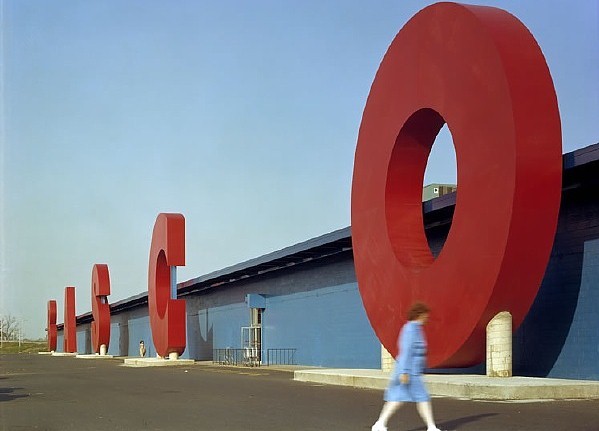
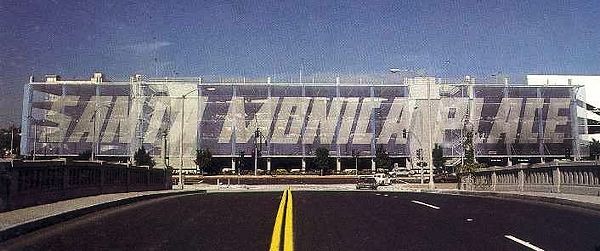
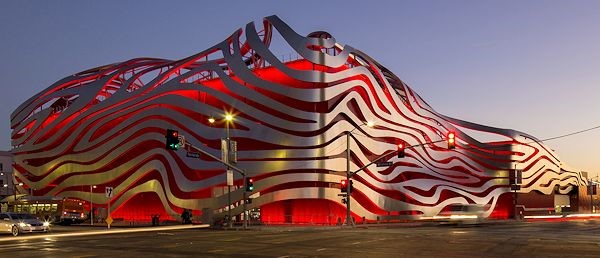
further acceleration 2015.09.29:
Architecture Critic Mark Lamster: "We systemically encourage bad building."
Quondam: Don't just embrace the junk, make it junkier!
That's exactly accelerationism!
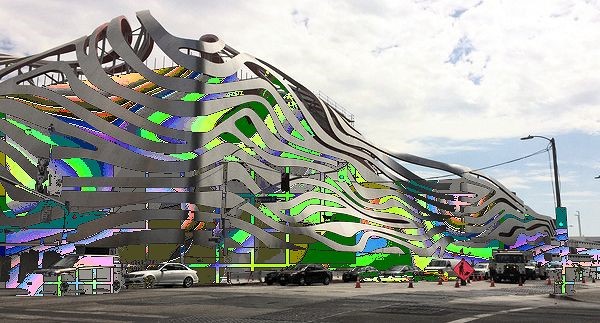
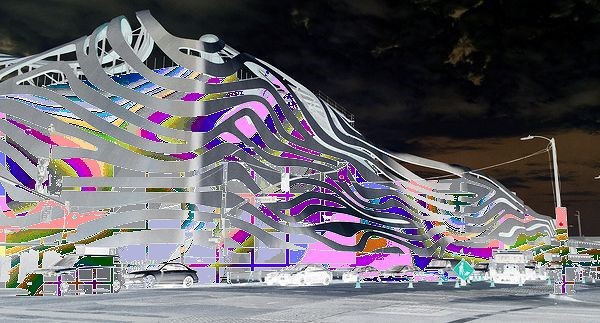
So again 2015.12.18:
Don't just embrace the junk, make it junkier!
That's exactly accelerationism!
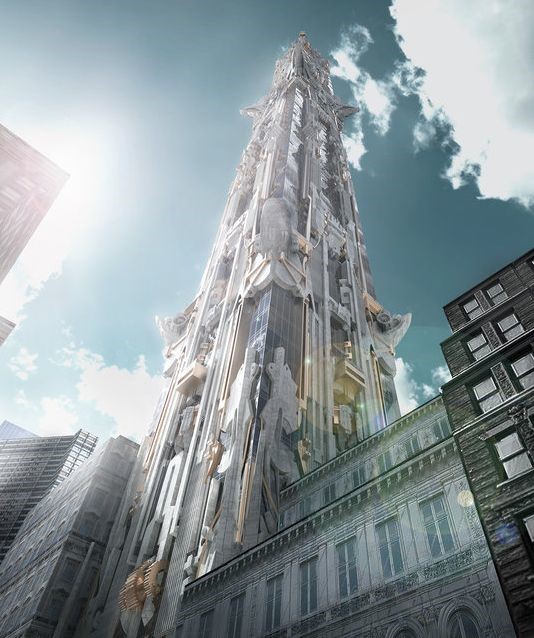
| |
2015.12.26 22:33
Drones? ( Umanned Aerial Systems ) How do vision their use in Architecture?
Saw a guy playing with a drone in the park this afternoon. A whole lot of control in the hands of the user was quite evident.
I imagine that sometimes imaging drones could be very useful at construction site visits.
2015.12.27 12:58
bilbao effect: various definitions
I remember the first time I heard "Bilbao Effect" discussed in a forum: Terence Riley's key note address at the Digital Translation symposium held at the University of Pennsylvania's Graduate School of Fine Arts 1999.04.30-1999.05.01. I recorded most of this speech and even transcribed it. I'll look up exactly what he said.
2015.12.27 14:14
bilbao effect: various definitions
from:
Terence Riley, MoMA
Complex Geometries: Plotting a Course presented 30 April [1999] at the "Digital Translations" symposium University of Pennsylvania Graduate School of Fine Arts
"I think architects are feeling the possibility of being slightly old fashioned. And it is a real question now, is architecture a still art, or is it one of the old fashioned fine arts? Or, through the media, can it be part of this new kind of performing art. And I think Bilbao is key to understanding this. So, to understand this idea of competition and where it might be leading us, we have to recognized the changed relationship between architecture and the media, and how that effects the perception of architecture by the public. We just had this symposium at MoMA, John Rajchman was moderator, and it was a very interesting session where a number of the leading architects in the world started talking about the "Bilbao effect". I had no idea of how much these architects were not thinking about the building but were thinking about what the building had done to change architectural culture. And Peter Eisenman, who is not very confessional most of the time, I found to be incredibly confessional, admitting that he doesn't know the difference between a theme park and good architecture these days. There is a very fine line between the two, and he finds that his ability to distinguish the two is changing, and he illustrated this by telling the story of being on a jury in Frankfurt where he and one other architect and, in his words, fourteen bureaucrats. There were five architectural projects, he felt that the one was the most radical, and somehow he had to convince the jury that this was "the" radical project. How would he defend it against these bureaucrats? They had a vote, and it was 16-0 in favor of the radical project. All the bureaucrats were saying, "this will be like Bilbao; it will be great; all the tourists will come." Eisenman had a real shock. What he was realizing, of course, was that, well, I'll come back to it later. Frank Gehry himself tells a very similar (in terms of import) story. He was very proud that when EuroDisney was being built, he resisted being given a theme building. He insisted that Bob Stern can do "New York, New York", but "I don't do a theme building." So he was very proud that Disney agree that he could do this space that was about (I don't remember what it was called), but it was a fun place to go, and it was a Frank Gehry building. He said that once he went to see it though, he had a kind of revelation, and he realized that Disney had won, because in that environment, they had gotten him to do a theme building. He did a Frank Gehry theme building. He had become a theme in [Euro]Disney. And it goes on and on, and some these stories . . ."
published at Quondam 1999.07.07
|